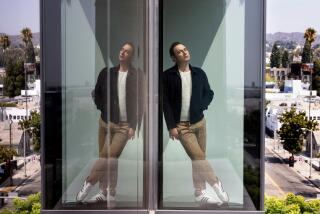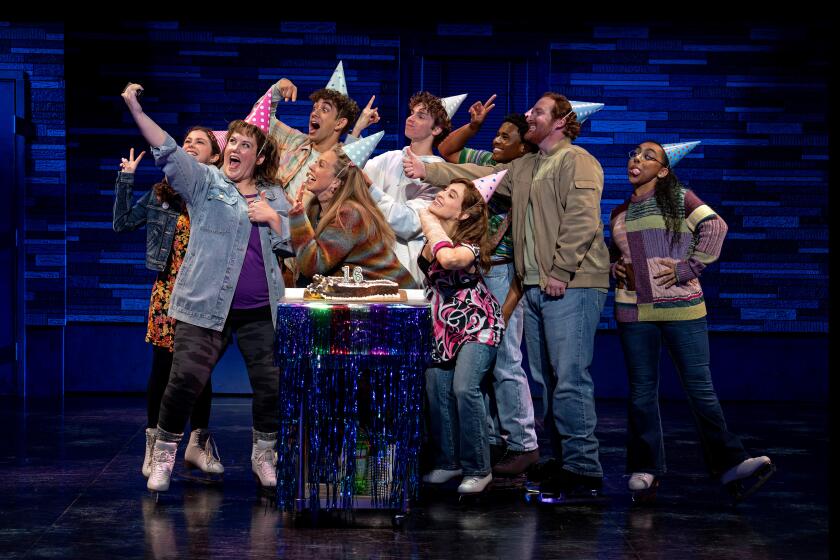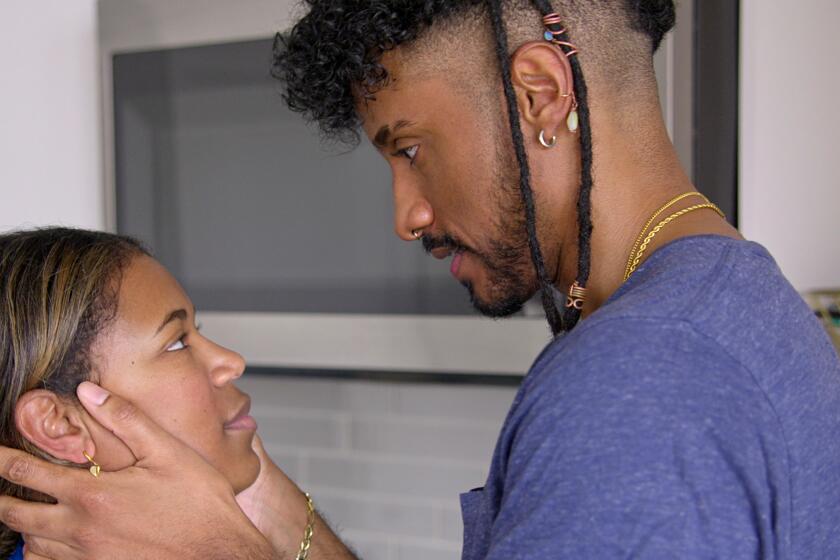Museum faces challenges in crafting future
If appearances were all that mattered, the Craft and Folk Art Museum would be doing just fine. The street-level shop that entices people into the building on mid-Wilshire Boulevard is crammed with a global array of handmade goodies. Upstairs in the galleries, the exhibition “Celebrating Nature: Craft Traditions / Contemporary Expressions” offers an eye-popping selection of labor-intensive works by contemporary artists who use traditional craft materials to express ideas inspired by nature.
But behind the scenes, the 39-year-old museum is engaged in a struggle that has dragged on -- in one way or another -- for 15 years. After flourishing for a quarter of a century, CAFAM foundered in overly ambitious expansion and renovation schemes.
For the record:
12:00 a.m. Dec. 10, 2004 For The Record
Los Angeles Times Friday December 10, 2004 Home Edition Main News Part A Page 2 National Desk 1 inches; 53 words Type of Material: Correction
Museum director’s tenure -- An article in Monday’s Calendar section about challenges facing the Craft and Folk Art Museum said Peter Tokofsky had been forced to resign from his position as director of the museum after less than a year on the job. Tokofsky directed the museum for a year and two weeks.
Hitting bottom in 1998, the museum was closed for a year and its collection was sold at auction. It reopened in 1999 under a partnership with the city’s Cultural Affairs Department, but it has yet to regain its youthful energy and its presence in Los Angeles’ cultural scene.
And now CAFAM faces additional challenges. The Cultural Affairs Department has responded to a cut in its own budget by reducing its annual support of the museum from $210,000 to $90,000 -- a precipitous drop for an institution that operates on $500,000 a year. And James Goodwin, the museum’s interim director, has notified the trustees of his intention to leave in March, three months sooner than expected, because of personal responsibilities related to a death in his family.
These setbacks do not amount to a disaster, museum leaders say, but they complicate an already difficult situation.
“I’ve seen lots of ups and downs,” says Wally Marks III, a real estate developer and 10-year veteran of the board of trustees who is the board’s treasurer. “We are lucky to have a relationship with the city of Los Angeles; it saved the museum’s life,” he says. “And we are unlucky that the city of Los Angeles has had to reduce its support.”
It won’t be easy to make up the loss, Marks says. “We don’t have deep-pockets trustees, and we need them.” But the half-million-dollar annual operating budget is not a huge amount of money, he says. If the museum can beef up its board and rebuild its membership -- which has plummeted from 3,000 to 300 -- it can sustain itself. Like most small museum stores, CAFAM’s shop is revenue neutral, he says, but attracting more people to exhibitions would probably produce more sales.
“The museum’s mandate is still valid,” says trustee Patrick H. Ela, who worked at the museum for 21 years, directing it from 1984 to 1996, and brokered the city deal. Los Angeles needs a showcase for traditional arts and contemporary crafts that reflect the city’s cultural diversity, he says.
The museum fills a special niche and doesn’t need a huge following to be viable, the trustees say. But without funds to publicize its programs, it hasn’t effectively made the point that it is not only open but back on track. And it needs to rebuild its base to attract donors.
“We have set a direction,” says Goodwin, who is credited with shaping up administrative operations and revitalizing the exhibition program. An artist, musician and former director of marketing at the Pacific Design Center, he took charge of the museum last February, succeeding Peter Tokofsky, who was forced to resign over unspecified differences of opinion after less than a year on the job.
“Our goal is to reconnect the institution to the vitality of its original vision,” Goodwin says. “That’s the most fertile field of possibility, I think the only possibility.”
The museum was founded in 1965 by the late Edith R. Wyle with her husband, Frank S. Wyle, who established Wyle Labs, a semiconductor and computer systems distribution company, and now heads CAFAM’s board of trustees. With Edith at the helm, the couple launched the museum as the Egg and the Eye -- a gallery, shop and omelet restaurant -- and reorganized it as a nonprofit institution in 1973. The point, Edith said, was to recognize the aesthetic and cultural merit of traditional folk art and contemporary crafts while establishing a nourishing relationship between them.
The mission never changed, but it seemed to get lost in the 1990s as the museum slipped from view during a renovation that proved too costly, then closed. But Wyle’s vision is now front and center, Goodwin says, referring to a statement that calls for celebrating “the irrepressible creativity of the human spirit as it reveals itself in diverse works of heart, hand and mind.”
“Celebrating Nature” -- offering a wide variety of intricately fashioned works in wood, clay, glass, stone and fiber -- is the first in a series of exhibitions organized by guest curator Kevin V. Wallace, intended to carry out the mission well after Goodwin’s departure. “The Art of Vivika and Otto Heino,” surveying the careers of two pioneering ceramic artists, will open March 10. It will debut in two parts, at CAFAM and the Ventura County Museum of History and Art, then travel in pared form.
Another exhibition, “Origin Unknown: Artifacts From a Luminous World” -- a walk-through, hand-crafted environment by Joseph Schuldiner, who works with a variety of natural and artificial materials -- will appear at CAFAM at the same time as the Heino show. Also on the museum’s agenda are “Faces: Folk Art as Community Expression,” the latest edition of a Neutrogena-sponsored project, opening May 10; and “Beatrice Wood: The Art of a Life,” a portrait of the eccentric artist through her collection, opening June 23.
Wallace views his curatorial work as a way of awakening the consciousness and creativity of computer-age viewers who spend much of their time as passive observers. Folk art and crafts can engage people with narratives and memories and broaden their horizons, he says.
Under Goodwin’s direction, the museum also has revived its publication program. Illustrated catalogs for “Celebrating Nature” and the Heino ceramics show are CAFAM’s first publications in about 15 years.
Goodwin has laid a solid foundation, the trustees say, but he will be the fifth director to leave the museum in the past eight years. And his successor will inherit an institution with a financial shortfall, a tiny staff and many challenges.
Trying to hire a director amid what Marks calls “a cash crunch” is not an ideal situation, as he readily admits.
“Am I concerned? Yes,” he says. “Am I optimistic? Yes. We have an obligation to pull the museum out of this, and we have a great group of people behind it.”
More to Read
The biggest entertainment stories
Get our big stories about Hollywood, film, television, music, arts, culture and more right in your inbox as soon as they publish.
You may occasionally receive promotional content from the Los Angeles Times.










